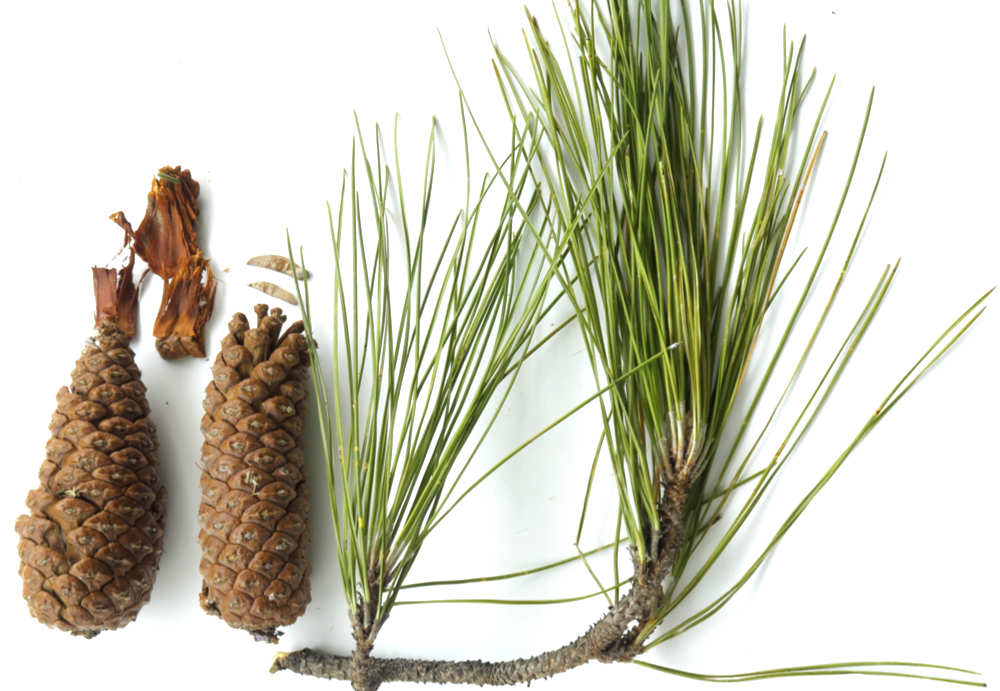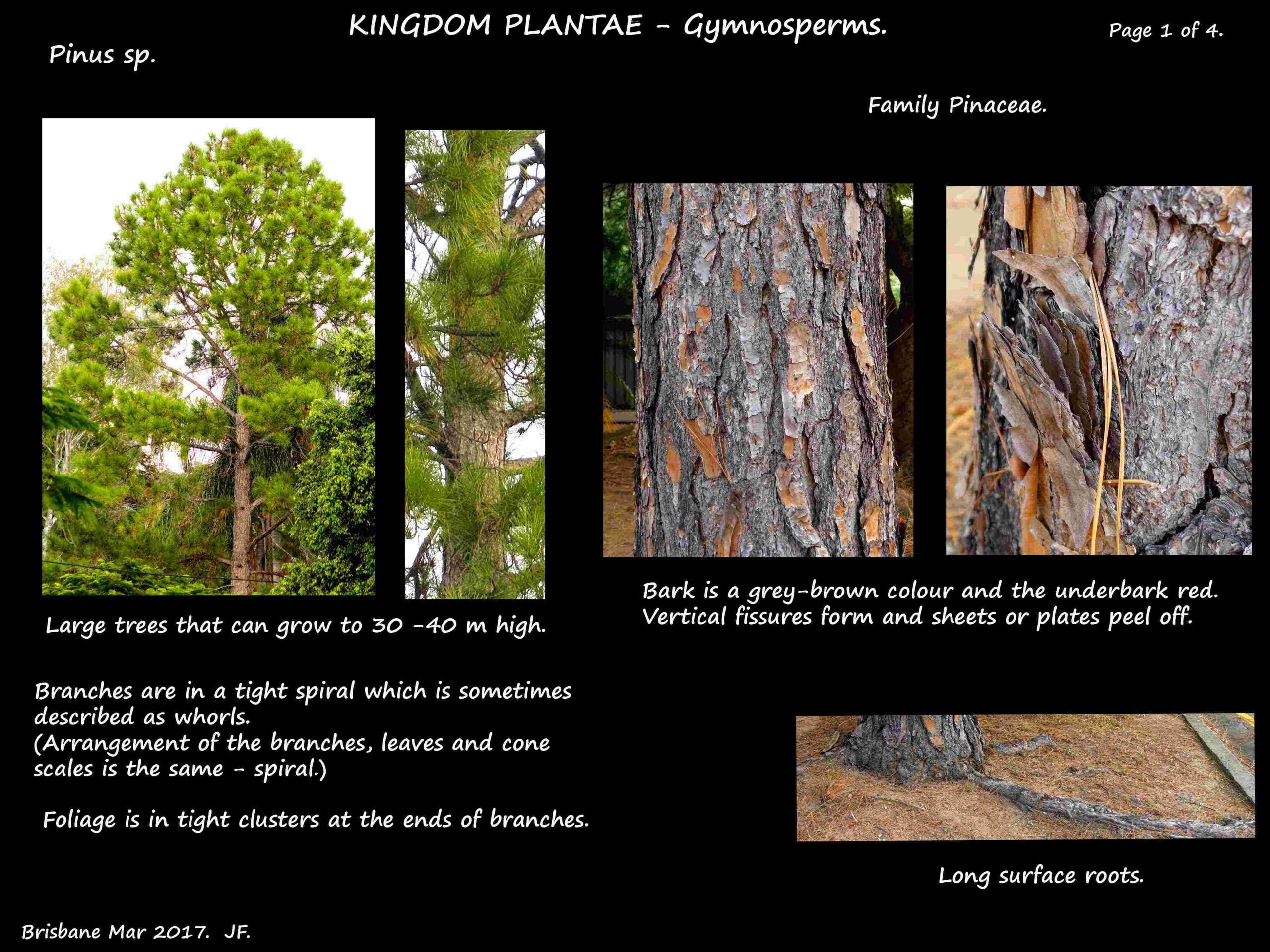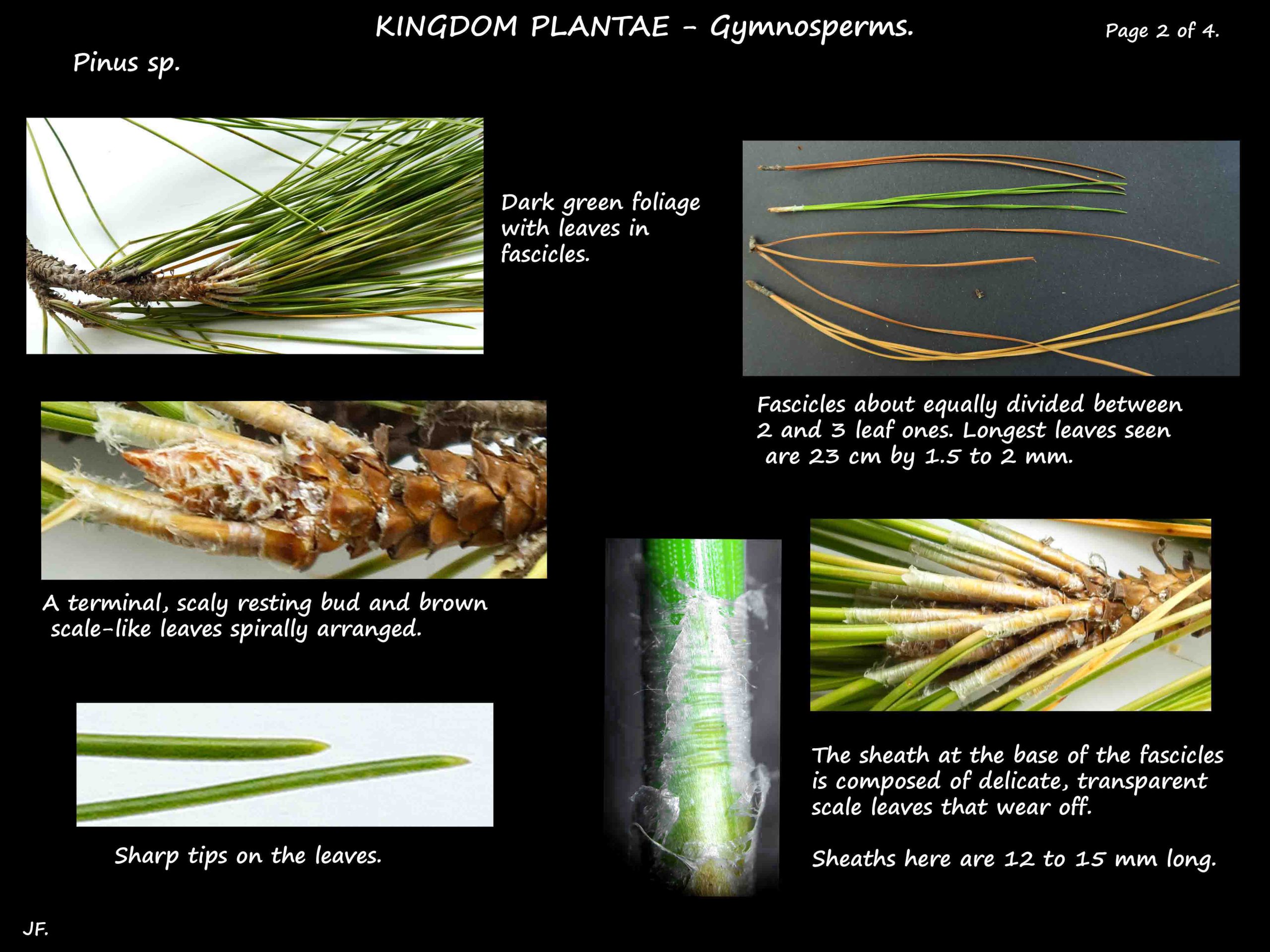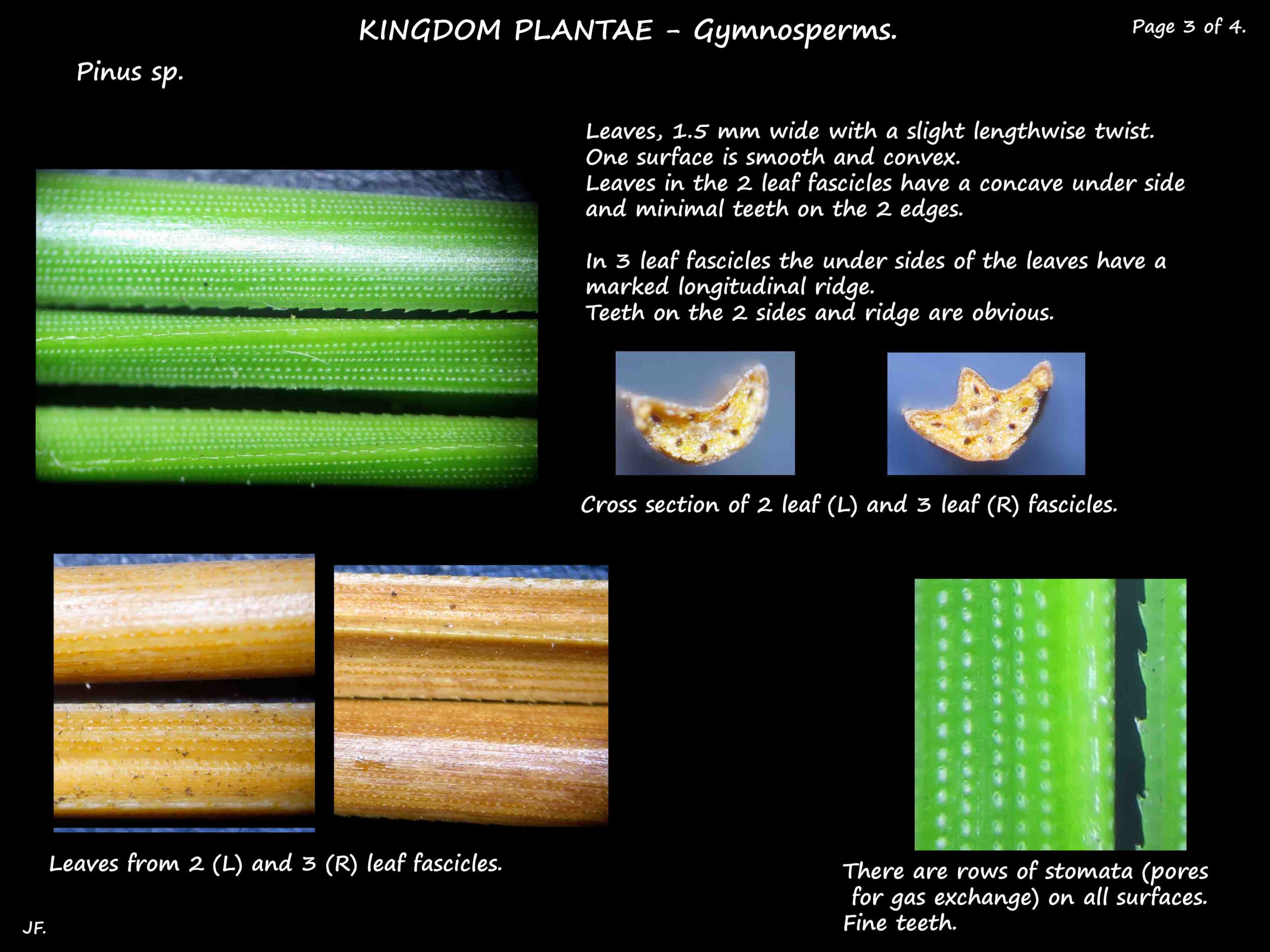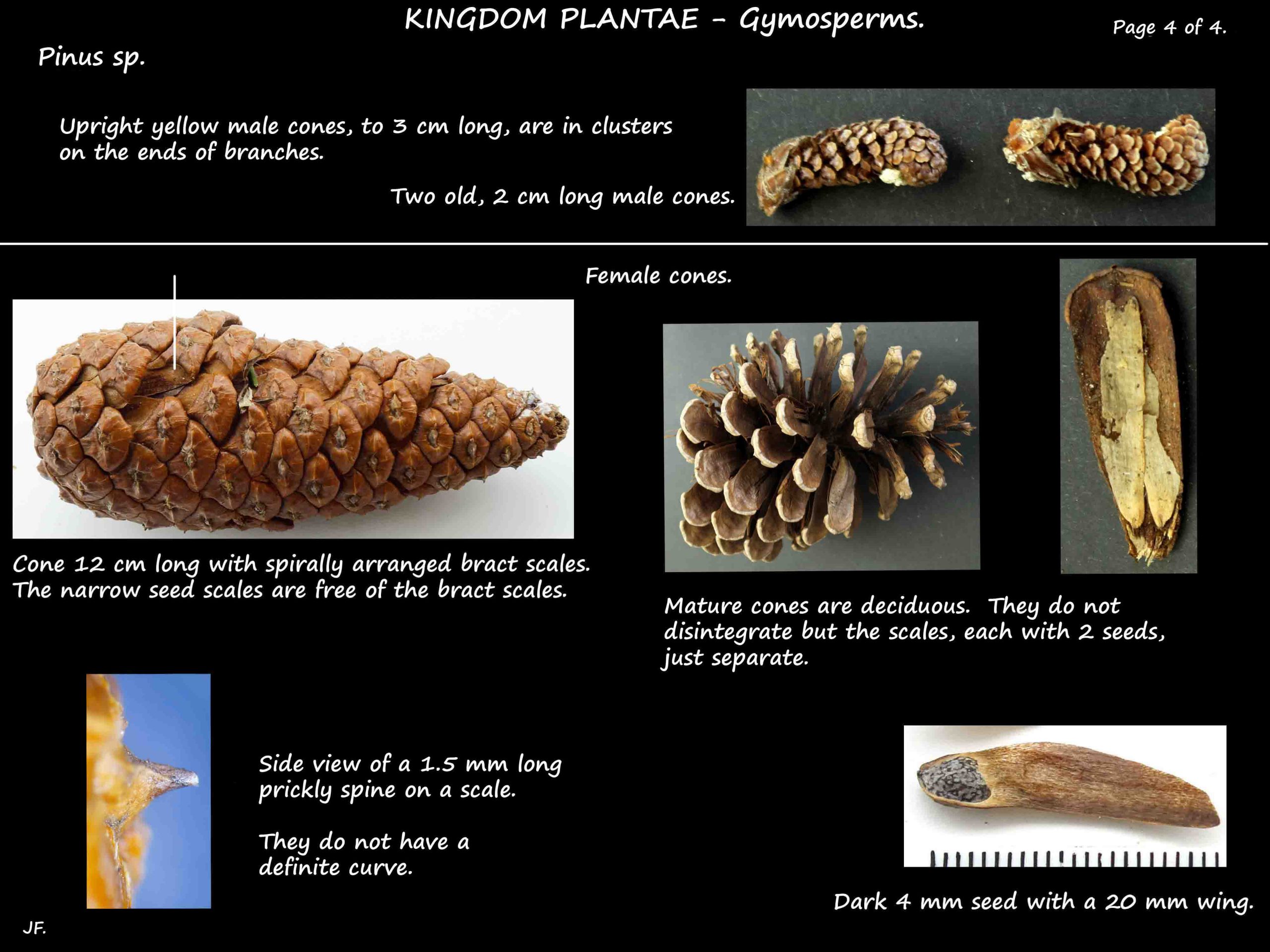Pinaceae family.
The Pinaceae or pine family has 10 to 12 genera with 220 to 250 species.
Found mostly in the temperate areas of the Northern hemisphere they are the largest conifer family
and are sometimes divided into 4 subfamilies based on morphological features.
Pinaceae contains the Pines (Pinus c.115 species ), Firs (Abies c. 50), and Spruce (Picea c. 35).
With fewer species are Cedrus (cedars), Larix (larch), Cathaya, Hesperopeuce, Keteleeria, Nothotsuga,
Pseudolarix, Pseudotsuga and Tsuga.
Pinus genus.
Long lived, mostly evergreen trees plus a few that are deciduous and some shrubs.
Many produce resin from various parts of the plant as a defence mechanism and as an aid to wound healing.
The main branches are in a tight spiral that can look as if they are in whorls.
Bark is usually thick and scaly but occasionally thin.
Leaves on seedlings and juvenile plants are different from the adult ones.
Adult leaves are –
:scale-like, spirally arranged with bases that run down the stem and
:needle-like, green leaves in pairs or in clusters of up to 6 leaves on very
short shoots that are covered by scale leaves – a fascicle.
Branchlets usually have a terminal, scaly resting bud.
Trees have both male and female cones.
Male cones, often crowded together, have spirally arranged microsporophylls each with 2 microsporangia
(pollen sacs) on their outer or lower surfaces which produce masses of yellowish pollen.
Cones can be up to 5 cm long and fall off after the pollen is released. The sacs open via horizontal slits.
Woody female cones, up to 6 cm long and a few mms wide are ovoid, cylindrical or conical.
They are at the ends of the branches or on short lateral ones.
The central cone axis holds 1 to many spirally arranged bract-scales (modified leaves).
Each wide bract scale hides a seed scale (a modified lateral branch).
The bract and seed scales are mostly free of each other when mature.
Each seed scale has 2 ovules firmly attached to its upper or inner surface.
The bract scales open slightly to allow the pollen in then close until the seed is mature.
Most species take 2 years for the female cones to mature and a few take three.
Most seeds are winged and wind dispersed but some larger seeds have a reduced wing and are dispersed
by birds or animals.
J.F.
